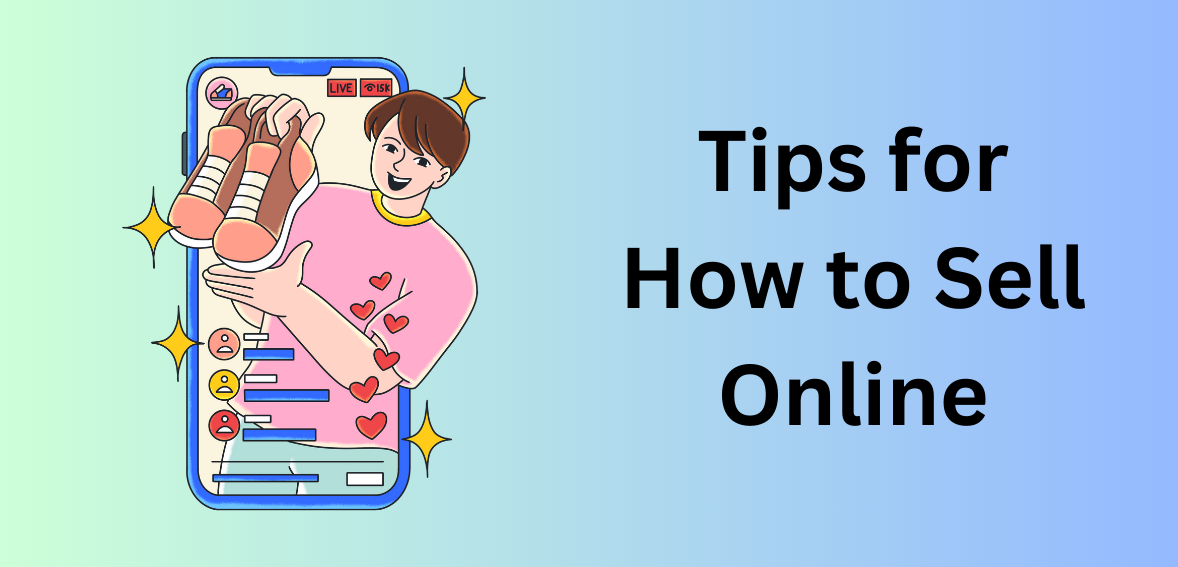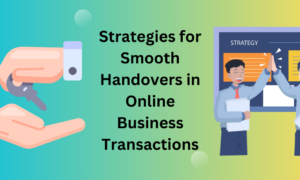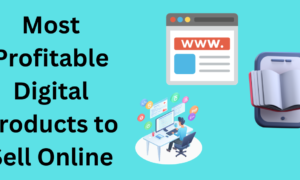Introduction to Online Selling
Welcome to the exciting world of online selling! Whether you’re a small business owner looking to expand your customer base or simply someone with a passion for fashion and furniture, selling online can offer incredible opportunities. With millions of potential buyers just a click away, the digital marketplace is waiting for you to showcase your clothing and furniture masterpieces. But where do you start? How do you navigate the vast sea of e-commerce platforms and effectively market your products? Don’t worry – we’ve got you covered! In this article, we’ll provide practical tips on how to sell clothing or furniture online, ensuring that your items find their way into the hands of eager buyers all over the world. So grab a cup of coffee (or tea!) and let’s dive into this exciting journey together!
Choosing the Right Platform
Choosing the right platform is a crucial step when it comes to selling online. With so many options available, it’s important to find one that aligns with your specific needs and goals. Whether you’re selling clothing or furniture, there are platforms out there designed for different types of products.
One popular option is setting up your own e-commerce website. This gives you complete control over your brand and allows you to customize the shopping experience for your customers. However, building and maintaining a website can be time-consuming and requires some technical know-how.
Another option is selling on established marketplaces such as Amazon or eBay. These platforms already have a large customer base, which means increased visibility for your products. However, keep in mind that these marketplaces often charge fees and may have stricter rules and regulations.
If you’re looking for a more niche-focused platform, consider exploring sites like Etsy or Poshmark for selling clothing or vintage items. These platforms cater specifically to creative entrepreneurs and allow you to tap into their targeted audience.
Research each platform thoroughly before making a decision – read reviews from other sellers, consider the fees involved, evaluate their customer support services, and assess if they offer any additional marketing tools or features that could benefit your business.
Choosing the right platform depends on factors such as product type, target audience demographics, budget constraints,and personal preferences.
Remember that finding success online takes time,maintenance,and adaptability
Tips for Selling Clothing Online
Selling clothing online can be a lucrative venture if you know how to do it right. Here are some tips to help you successfully sell your clothing items on the internet.
1. High-quality product photos: When selling clothing online, visuals are everything. Make sure to take clear and well-lit photos of your clothes from different angles. Show close-ups of any unique details or patterns.
2. Accurate descriptions: Be detailed in describing your clothing items, including size, material, and any specific measurements. This helps potential buyers make informed decisions and reduces the likelihood of returns or dissatisfied customers.
3. Pricing competitively: Research similar products on other platforms to ensure that your prices are competitive but still allow for a profit margin. Consider offering occasional discounts or promotions to attract more customers.
4. Clear return policy: Establishing a clear return policy builds trust with customers and gives them confidence in purchasing from you. Clearly state how returns should be handled and any conditions for accepting them.
5. Utilize social media influencers: Collaborating with influencers who have an engaged following in the fashion niche can help boost visibility for your clothing brand and drive sales.
6. Offer size guides: Providing accurate size charts will assist customers in choosing the right fit, reducing the chances of receiving returns due to incorrect sizing.
7. Shipping options: Provide various shipping options such as expedited shipping or international delivery if possible, giving customers flexibility when it comes to receiving their purchases quickly.
Remember that selling clothing online requires continuous effort in terms of marketing strategies, customer service, and staying up-to-date with current trends!
Tips for Selling Furniture Online
When it comes to selling furniture online, there are a few key tips that can help you maximize your success. First and foremost, high-quality photos are essential. Clear, well-lit images from multiple angles will give potential buyers a better idea of what they’re getting.
Another important tip is to accurately describe the condition of the furniture. Be honest about any flaws or imperfections so that customers know exactly what they’re purchasing.
Pricing is also crucial when selling furniture online. Do some research to see what similar items are selling for, and price yours competitively. Consider offering discounts or promotions to attract more buyers.
In terms of shipping logistics, be clear about whether you offer delivery or if the buyer will need to arrange pickup. Provide accurate measurements and weight information so that customers can determine if the item will fit in their space.
Don’t forget about marketing your furniture listings on social media platforms like Instagram and Pinterest. These visual platforms can help showcase your pieces and reach a wider audience.
By following these tips for selling furniture online, you’ll increase your chances of making successful sales and finding happy new owners for your pieces!
Utilizing Social Media and Marketing Strategies
In today’s digital age, social media has become a powerful tool for businesses to promote their products and connect with customers. When it comes to selling online, leveraging social media platforms can greatly enhance your reach and increase sales.
It is important to identify the right social media channels that align with your target audience. For clothing sellers, platforms like Instagram and Pinterest are fantastic options as they allow you to showcase visually appealing images of your products. On the other hand, furniture sellers may find success on Facebook or Houzz, where they can share detailed descriptions and create engaging content.
Once you have chosen the appropriate platforms, it’s time to create a strong presence by regularly posting high-quality images or videos of your items. To maximize engagement, utilize relevant hashtags and encourage followers to share or tag friends who may be interested in your offerings.
Furthermore, running targeted ads on social media can help you expand your customer base even further. Platforms like Facebook offer advanced targeting options based on demographics such as location, age group, interests etc., allowing you to reach potential buyers more effectively.
Another effective strategy is collaborating with influencers in your niche. Partnering with popular bloggers or YouTubers who endorse or review products similar to yours can significantly boost visibility among their dedicated fanbase.
Remember that consistency is key when it comes to utilizing social media for marketing purposes. Regularly engage with followers through comments and direct messages while maintaining an authentic brand voice that resonates with potential buyers.
By harnessing the power of social media networks and implementing strategic marketing techniques specific to each platform’s strengths, you can elevate your online selling game significantly!
Managing Inventory and Shipping Logistics
One of the crucial aspects of selling online is effectively managing your inventory and ensuring smooth shipping logistics. This ensures that your products are available for purchase and reach customers in a timely manner.
To begin with, it’s essential to keep track of your inventory accurately. Implement an inventory management system or software that allows you to monitor stock levels, update product availability, and receive alerts for low-stock items. Regularly updating your inventory listings will help prevent overselling or disappointing customers with out-of-stock items.
When it comes to shipping logistics, consider partnering with reliable shipping providers or fulfillment centers. Research various options and compare their rates, delivery times, and reliability before making a decision. Choose a provider that meets both your budgetary needs and customer expectations.
Streamlining the packaging process is also important. Invest in appropriate packaging materials like boxes, bubble wrap, packing peanuts, or padded envelopes to protect fragile items during transit. Clearly label packages with accurate addresses to avoid any confusion or delays.
Additionally, provide tracking information to customers so they can follow the progress of their shipment. This not only enhances transparency but also instills trust in buyers knowing they have visibility into the delivery process.
Regularly evaluate your inventory turnover rate to identify popular products as well as slow-moving ones that may require further marketing efforts or adjustments in pricing strategies.
By efficiently managing inventory levels and optimizing shipping logistics processes, you can ensure customer satisfaction while minimizing errors and delays in order fulfillment – ultimately boosting sales opportunities for your online business!
Providing Excellent Customer Service
Providing excellent customer service is crucial for any online seller, whether you’re selling clothing or furniture. It’s what sets you apart from your competitors and keeps customers coming back for more.
One important aspect of providing great customer service is being responsive. Respond to inquiries and messages promptly, showing that you value your customers’ time. This can help build trust and establish a positive relationship with your buyers.
Another key element of excellent customer service is clear communication. Make sure to provide detailed product descriptions, accurate measurements, and high-quality images so that customers have all the information they need to make informed purchasing decisions.
Additionally, it’s essential to be transparent about shipping policies and return/exchange procedures. Customers appreciate honesty and straightforwardness when it comes to these aspects of their shopping experience.
Beyond just answering questions or addressing concerns, go the extra mile by offering personalized assistance. Consider offering styling tips for clothing items or suggesting complementary pieces for furniture purchases. This level of personalization can leave a lasting impression on customers.
Always follow up after a purchase to ensure customer satisfaction. Send a thank-you email or message expressing gratitude for their business and ask if there’s anything else you can assist them with.
By providing excellent customer service throughout the entire buying process, you not only increase the likelihood of repeat business but also encourage positive word-of-mouth referrals from satisfied customers!
Conclusion: The Benefits of Selling Online
Selling online offers a plethora of benefits for individuals and businesses alike. Whether you’re selling clothing or furniture, the online marketplace provides an avenue to reach a wider audience and boost your sales potential. Here are some key advantages to consider:
1. Increased Reach: With the internet connecting people from all around the world, selling online gives you access to a global customer base. You can expand your reach far beyond what would be possible with a physical store.
2. Convenience and Flexibility: Online selling allows you to operate your business on your terms. You have the flexibility to set your own working hours, manage inventory remotely, and cater to customers’ needs at their convenience.
3. Lower Overhead Costs: Setting up an online store is generally more cost-effective than establishing a brick-and-mortar shop. You save on expenses such as rent, utilities, and staffing while still reaching potential customers 24/7.
4. Easy Scalability: As your business grows, scaling operations becomes much simpler in the digital realm compared to traditional retail models. You can easily add new products or expand into different markets without major logistical challenges.
5. Data Insights for Targeted Marketing: Selling online provides valuable data insights that help optimize marketing efforts towards specific target audiences based on demographics, preferences, browsing behavior, and purchase history.
6. Enhanced Customer Engagement: Utilizing social media platforms allows you to interact directly with customers through comments, messages, or live chat features—creating personalized experiences that foster loyalty and trust.
7. Customer Analytics for Personalization Opportunities : Collecting customer data enables tailored product recommendations based on their past purchases or browsing habits – enhancing their shopping experience by providing relevant suggestions they may not have discovered otherwise
8. Ease of Inventory Management & Shipping Logistics : Adopting efficient inventory management systems ensures accurate stockkeeping , avoiding overselling while streamlining order fulfillment processes- saving time & effort.



























